Featured image credit: SpaceX
| June 30 2021 – 19:11 UTC | 15:11 EDT |
|---|---|
Mission Name | Transporter-2, the second dedicated SpaceX rideshare mission |
Launch Provider | SpaceX |
Customer | Spaceflight, Exolaunch, D-Orbit, SpaceX and others |
Rocket | Falcon 9 Block 5 B1060-8; 62 day turn around |
Launch Location | Space Launch Complex 40 (SLC-40), Cape Canaveral Space Force Station, Florida, USA |
Payload mass | Unknown, no more than ~11,000 kg |
Where did the satellites go? | ~540 km Sun-Synchronous Orbit |
Did they attempt to recover the first stage? | Yes |
Where did the first stage land? | B1060-8 successfully landed on Landing Zone 1 (LZ-1) |
Did they attempt to recover the fairings? | Yes, Hos Briarwood attempted fairing recovery from the water ~605 km downrange; outcome TBD |
Were the fairings new? | The active and passive fairing halves had both previously supported 2 missions; 108 and 146 day turnaround time, respectively Both fairing halves used the relocated vent location |
This was the: | – 123rd Falcon 9 launch – 64th Falcon 9 flight with a flight proven booster – 68th re-flight of a booster – 4th 8th flight of a booster – 19th re-flight of a booster in 2021 – 89th booster landing – 32nd and 33rd reuse of a fairing half – 20th launch for SpaceX in 2021 – 74th SpaceX launch from SLC-40 – 61st orbital launch attempt of 2021 (59th successful launch) |
Where to watch | Official replay |
How did it go?
SpaceX successfully launched 88 satellites into a Sun-Synchronous orbit on their second dedicated rideshare mission, Transporter-2. The Falcon 9 Block 5 lifted off from Space Launch Complex 40 (SLC-40), at the Cape Canaveral Space Force Station, in Florida, USA. Roughly 8 minutes after launch, the first stage successfully performed a return to launch site (RTLS) landing, and softly touched down on Landing Zone 1.
Transporter-2 Mission
SHERPA-FX
For the third time, Falcon 9 flew with a third stage on the Transporter-2 mission. The third “transfer” stage, the SHERPA-FX, is a satellite dispenser designed by Spaceflight to deploy secondary payloads. This ensures that other payloads cannot interfere with communications to the satellite after launch. This was a problem on the SSO-A mission, where many satellite providers could not communicate with their satellites after deployment, as they were too close together. While the SHERPA-FX does not have any on-board propulsion, it is the first of several models of SHERPA. Other versions have a monopropellent to boost payloads into different orbits.
The SHERPA-FX has previously flown on the SSO-A and Transporter-1 missions.
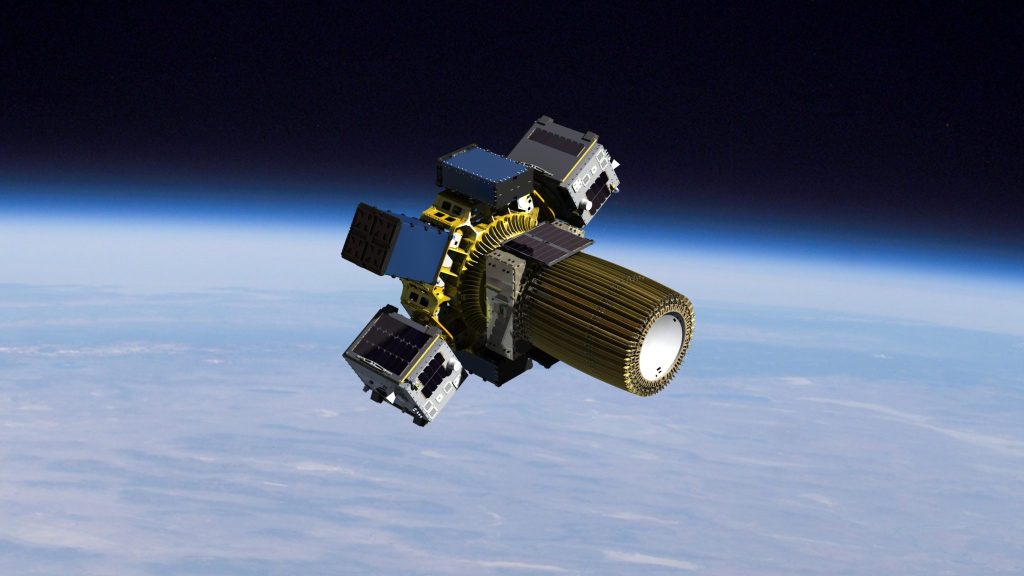
Falcon 9’s second stage deployed SHERPA-FX like any other payload. After separation, the transfer stage coasted, distancing itself from the Falcon 9 second stage and then deployed its payloads, while four of them stay attached. During this, the stage continued providing attitude control, telemetry, and communications to the satellites and the ground.
The primary purpose of SHEPRA on this mission was to ensure that unlike on SSO-A, all the small sats are able to be communicated with after reaching orbit. On Transporter-2, there are just under 25 payloads riding on SHERPA. These payloads include Astrocast, LEMUR, HawkEye Cluster 3, Lynk-06, SpaceBee, PAINANI-2, and TagSat-2.
SHERPA-LTE1
In addition to the SHERPA-FX transfer stage, the SHERPA-LTE1 also flew on the Transporter-2 mission. The LTE1 serves a similar purpose to the FX; however, unlike the SHERPA-FX the stage has its own propulsion system. The stage is equipped with a Xenon ion thruster, which is used to bring the satellites to a different orbit. Transporter-2 marked the first use of the SHERPA-LTE transfer stage, and can carry up to 14 satellites.
The SHERPA-LTE1 was deployed from the second stage like any other payload. On this mission it carried the Shasta, Faraday Phoenix, Tiger-2, ARTHUR-1, LEMUR, Polar Vigilance KSF1, and Tenzing satellites.
Other Payloads
On the Transporter-2 mission, Exolaunch also launched roughly 30 satellites. These payloads include YAM-3, TUBIN, D-2/AtlaCom-1, XR-2, and ICEYE.
Furthermore, D-Orbit launched the Neptuno, Spartan, QMR-KWT, W-Cube, Ghalib, NAPA 2 / RTAF-SAT 2, ADEO, LaserCub, Nebula, and Worldfloods payloads.
SpaceX also launched 3 Starlink satellites, which were equipped with inter-satellite laser communication links.
LEMUR
Nanoracks launched 3 LEMUR satellites on Transporter-2. The LEMUR constellation is an Earth observation and traffic monitoring constellation built and operated by Spire. The satellites are able to use GPS signal occultation to measure pressure, humidity, and temperature. LEMUR is used to monitor trade, prevent piracy, track assets, assist in search and rescue operations, and help prevent illegal fishing.

SpaceBees
The SpaceBee constellation is a satellite constellation with the goal of demonstrating two-way communication between cheap and low-data satellites. The satellites will help provide affordable internet in hard to reach parts of the world that do not yet have reliable access.

Astrocast’s IoT satellite
Astrocast launched five internet of things (IoT) nanosatellites into its constellation on the Transporter-2 mission. These satellites will increase the capacity of the constellation, which enables companies to track IoT products in remote regions of the globe.
ARTHUR-1
Aerspacelab’s ARTHUR-1 satellite is a risk reduction satellite meant to demonstrate Aerospacelab’s ability to maneuver a high resolution optical payload in orbit. The ARTHUR-1 satellite will also provide flight heritage to the company and serve as a stepping stone for future payloads.
Cluster 3
HawkEye’s 360’s Cluster 3 is an expansion on HawkEye’s 360 next-generation satellite constellation. The HawkEye constellation detects and locates radio signals and uses Fourier transformations to mathematically decompose a signal into its fundamental sinusoidal waves. This information is then used for maritime domain awareness, national security, and environmental protection.
TIGER 5G IoT
OQ Technology launched the TIGER-2 mission, which is their second mission aiming to provide global 5G internet of things connectivity. This consists of two payloads: a low frequency satellite to provide machine-to-machine services and a higher frequency radio link demonstration satellite.

What is Falcon 9 Block 5?
The Falcon 9 Block 5 is SpaceX’s partially reusable two-stage medium-lift launch vehicle. The vehicle consists of a reusable first stage, an expendable second stage, and, when in payload configuration, a pair of reusable fairing halves.
First Stage
The Falcon 9 first stage contains 9 Merlin 1D+ sea level engines. Each engine uses an open gas generator cycle and runs on RP-1 and liquid oxygen (LOx). Each engine produces 845 kN of thrust at sea level, with a specific impulse (ISP) of 285 seconds, and 934 kN in a vacuum with an ISP of 313 seconds. Due to the powerful nature of the engine, and the large amount of them, the Falcon 9 first stage is able to lose an engine right off the pad, or up to two later in flight, and be able to successfully place the payload into orbit.
The Merlin engines are ignited by TEA-TEB. During static fire and launch the TEA-TEB is provided by the ground service equipment. However, as the Falcon 9 first stage is able to propulsively land three of the Merlin engines (E1, E5, and E9) contain TEA-TEB canisters to relight for the boost back, reentry, and landing burns.
Second Stage
The Falcon 9 second stage is the only expendable part of the Falcon 9. It contains a singular MVacD engine that produces 981 kN of thrust and an ISP of 348 seconds. The second stage is capable of doing several burns, allowing the Falcon 9 to put payloads in several different orbits.
For missions with many burns and/or long coasts between burns, the second stage is able to be equipped with a mission extension package. When the second stage has this package it has a grey strip, which helps keep the RP-1 warm, an increased number of COPVs for pressurization control, and additional TEA-TEB.
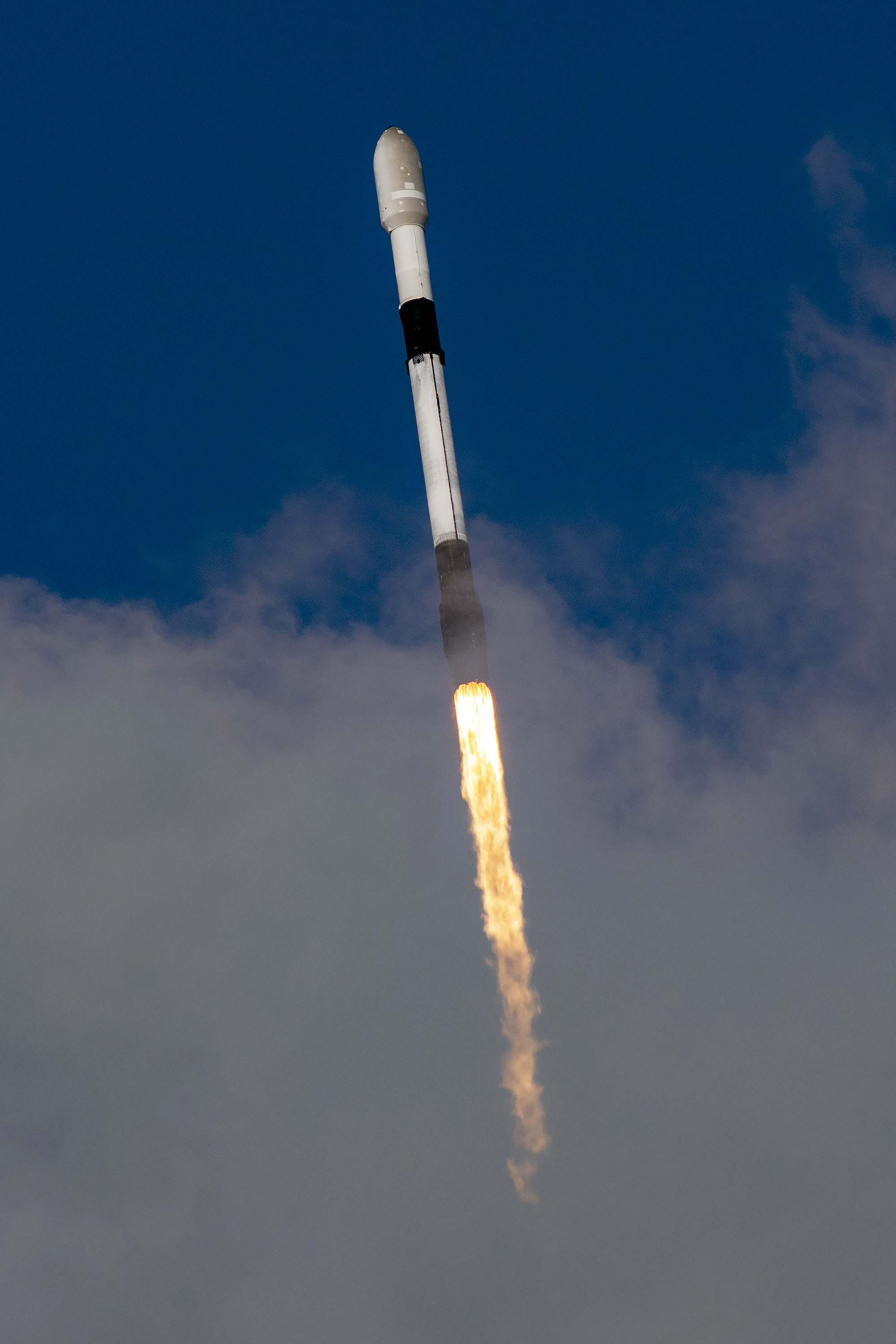
Falcon 9 Booster B1060
The booster that supported the Transporter-2 mission is B1060. B1060 had previously supported 7 missions; as this was the booster’s eighth flight, its designation was B1060-8.
| B1060’s missions | Launch Date (UTC) | Turn Around Time (Days) |
| GPS III SV03 | June 30, 2020 | N/A |
| Starlink V1.0 L11 | September 3, 2020 | 65 |
| Starlink V1.0 L14 | October 24, 2020 | 51 |
| Türksat-5A | January 8, 2021 | 76 |
| Starlink V1.0 L18 | February 4, 2021 | 27 |
| Starlink V1.0 L22 | March 24, 2021 | 48 |
| Starlink V1.0 L24 | April 29, 2021 | 36 |
| Transporter-2 | June 25, 2021 | 62 |
Following stage separation, the Falcon 9 conducted three burns. These burns softly touched down the booster on SpaceX’s Landing Zone-1 (LZ-1).

Falcon 9 Fairings
The Falcon 9’s fairing consists of two dissimilar reusable halves. The first half (the half that faces away from the transport erector) is called the active half, and houses the pneumatics for the separation system. The other fairing half is called the passive half. As the name implies, this half plays a purely passive role in the fairing separation process, as it relies on the pneumatics from the active half.
Both fairing halves are equipped with cold gas thrusters and a parafoil which are used to softly touch down the fairing half in the ocean. SpaceX used to attempt to catch the fairing halves in nets on GO Ms. Tree and GO Ms. Chief. However, at the end of 2020 this program was canceled due to safety risks and a low success rate. On Transporter-2, SpaceX attempted to recover both of the fairing halves from the water with their recovery vessel Hos Briarwood.
SpaceX is currently flying two slightly different versions of the Falcon 9 fairing. The new “upgraded” version has vents only at the top of each fairing half, by the gap between the halves, whereas the old version had vents placed spread equidistantly around the base of the fairing. Moving the vents decreases the chance of water getting into the fairing, making the chance of a successful scoop significantly higher.
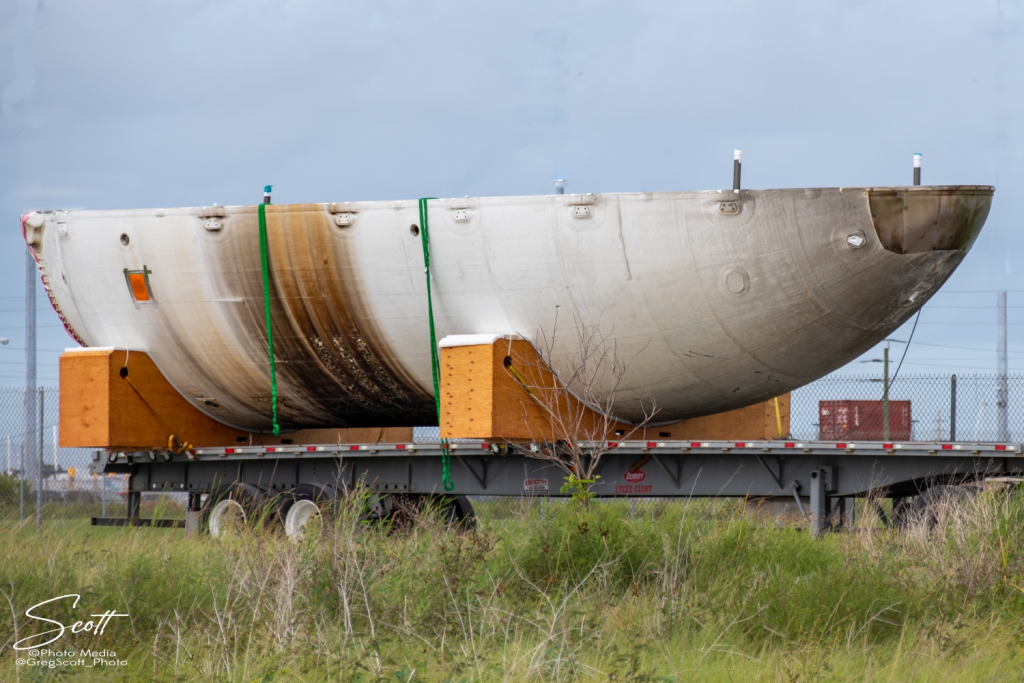
An active Falcon 9 fairing half (Credit: Greg Scott) 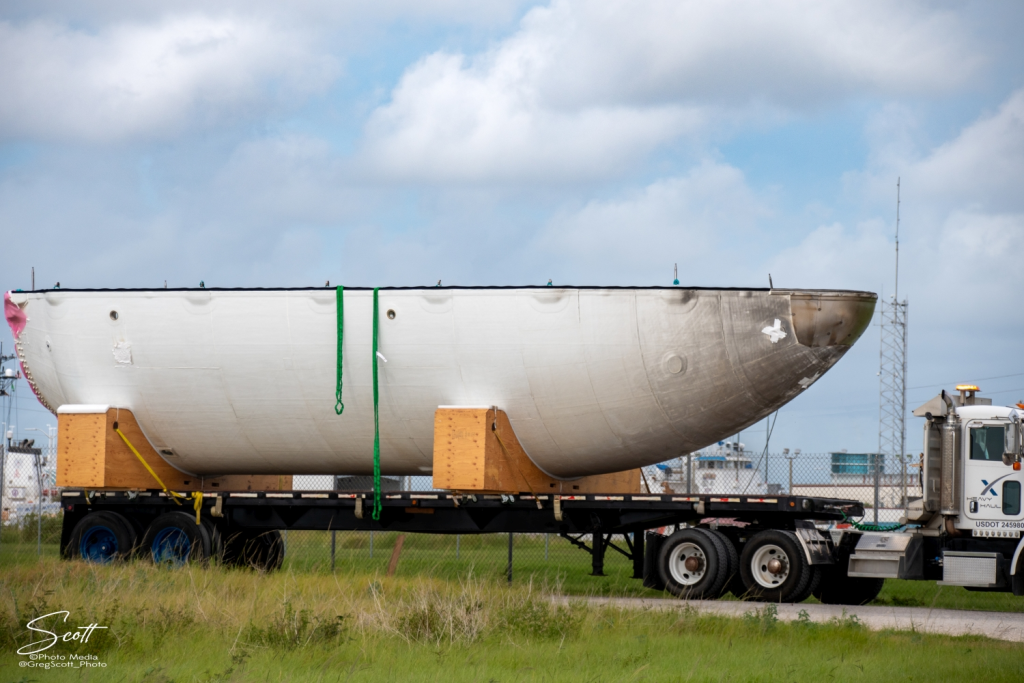
Falcon 9 passive fairing half (Credit: Greg Scott) 
Half of the fairing being taken off Go. Navigator. (Credit: Lupi) 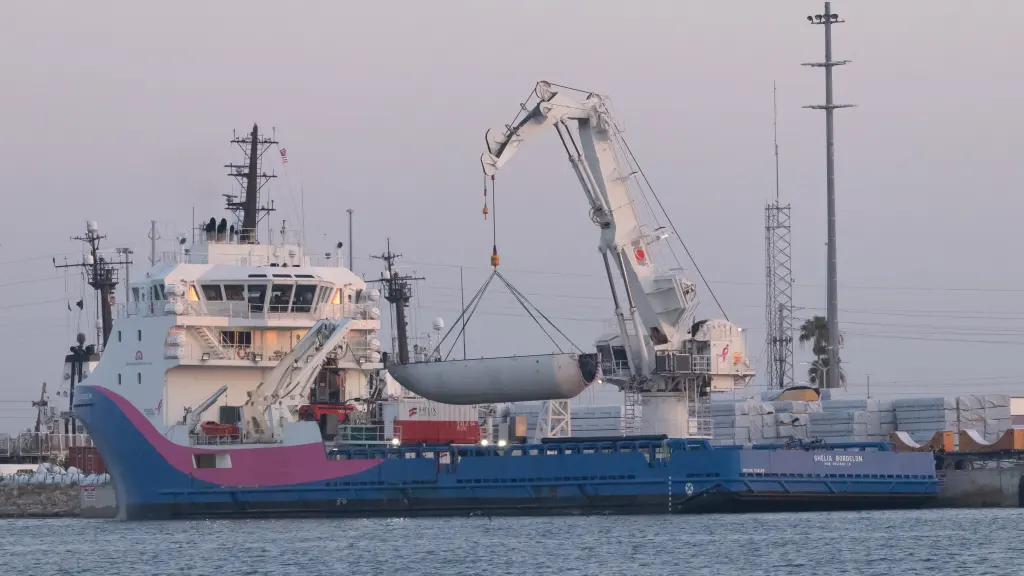
A passive fairing half being unloaded from Shelia Bordelon after the Starlink V1.0 L22 mission (Credit: Kyle M)
Transporter-2 Full Mission Profile
Hr/Min/Sec Event
| 00:38:00 | SpaceX Launch Director verifies go for propellant load |
| 00:35:00 | RP-1 (rocket grade kerosene) loading underway |
| 00:35:00 | 1st stage LOX (liquid oxygen) loading underway |
| 00:16:00 | 2nd stage LOX loading underway |
| 00:07:00 | Falcon 9 begins engine chill prior to launch |
| 00:01:00 | Command flight computer to begin final prelaunch checks |
| 00:01:00 | Propellant tank pressurization to flight pressure begins |
| 00:00:45 | SpaceX Launch Director verifies go for launch |
| 00:00:03 | Engine controller commands engine ignition sequence to start |
| 00:00:00 | Falcon 9 liftoff |
Transporter-2 Launch, Landing, and Satellite Deployment*
| 00:01:12 | Max Q (moment of peak mechanical stress on the rocket) |
| 00:02:15 | 1st stage main engine cutoff (MECO) |
| 00:02:18 | 1st and 2nd stages separate |
| 00:02:26 | 2nd stage engine starts |
| 00:02:32 | Boostback burn begins |
| 00:03:42 | Fairing deployment |
| 00:06:34 | 1st stage entry burn begins |
| 00:08:24 | 2nd stage engine cutoff (SECO) |
| 00:08:24 | 1st stage landing |
| 00:54:13 | 2nd stage engine restarts |
| 00:54:15 | 2nd stage engine cutoff (SECO-2) |
| 00:57:50 | NASA’s PACE-1 deploys |
| 00:57:57 | Satellogic’s NewSat-19 deploys |
| 00:58:04 | The 1st ICEYE satellite deploys from EXOPort-5 |
| 00:58:32 | NASA’s TROPICS Pathfinder deploys |
| 00:58:37 | PlanetiQ’s GNOMES-2 deploys |
| 00:58:44 | Tyvak-0173 deploys |
| 00:59:47 | The 2nd ICEYE satellite deploys from EXOPort-3 |
| 01:00:00 | Tyvak-0211 deploys |
| 01:00:08 | Loft Orbital’s YAM-3 deploys from EXOPort-5 |
| 01:00:18 | TU Berlin’s TUBIN deploys from EXOPort-4 |
| 01:00:23 | UmbraSAR deploys |
| 01:00:33 | D-Orbit’s ION satellite carrier deploys |
| 01:01:50 | Space Development Agency/General Atomics/Peraton’s LINCS-2 deploys |
| 01:02:16 | Satellogic’s NewSat-20 deploys |
| 01:02:30 | Satellogic’s NewSat-21 deploys |
| 01:02:40 | Capella SAR satellite deploys |
| 01:02:46 | The 3rd ICEYE satellite deploys from EXOPort-4 |
| 01:04:12 | Space Development Agency/General Atomics/Peraton’s LINCS-1 deploys |
| 01:04:29 | DARPA/Space Development Agency/Air Force Research Laboratory’s Mandrake-2 Able deploys |
| 01:05:33 | The 4th ICEYE satellite deploys from EXOPort-3 |
| 01:06:48 | Swarm’s 1st SpaceBEE cluster deploys from EXOPort-4 |
| 01:07:10 | Swarm’s 2nd SpaceBEE cluster deploys from EXOPort-4 |
| 01:07:17 | NanoAvionics’ D2/AtlaCom-1 deploys from EXOPort-3 |
| 01:07:24 | Spire’s LEMUR number 1 deploys from EXOPort-3 |
| 01:07:47 | Satellogic’s NewSat-22 deploys |
| 01:07:56 | Loft Orbital’s YAM-2 deploys |
| 01:09:51 | Spires’s LEMUR number 2 deploys from EXOPort-3 |
| 01:09:58 | DARPA/Space Development Agency/Air Force Research Laboratory’s Mandrake-2 Baker deploys |
| 01:21:10 | Spaceflight Inc.’s Sherpa-FX2 deploys |
| 01:21:14 | Spaceflight Inc.’s Sherpa-LTE1 deploys |
| 01:27:35 | Starlink satellites deploy |
* All times are approximate

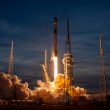
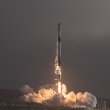

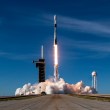
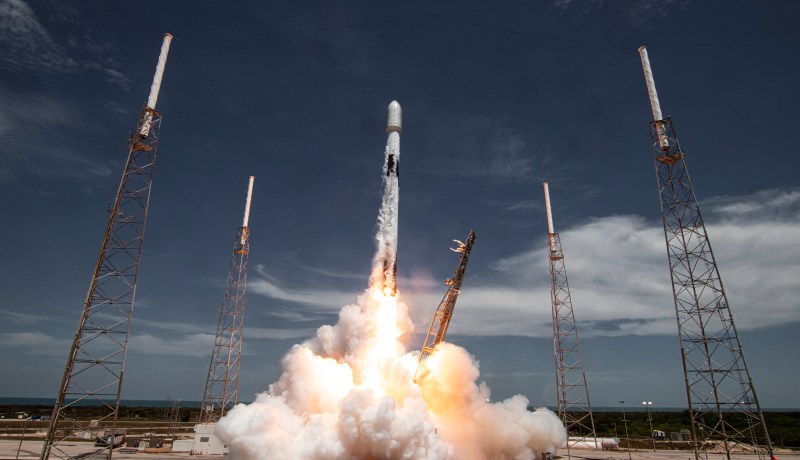
What’s the duration of the stage 1 boost back burn? I don’t see any indication of burn cut-off before the initial landing burn.
There are three distinct main engine burns in the video:
The boost back burn starts shortly after T+2:31 (my vision is obscured) and lasts less than a minute, ending at T+3:26.
The entry burn starts at T+6:46, they announce shutdown at T+7:08, and the fire is out at T+7:10.
The landing burn starts at T+7:53 and runs until T+8:28.
There is also a fair bit of thruster activity, starting at stage separation and continuing until the final burn starts.
It seems that my earlier post got eaten (spam filter?) but the “Official replay” link goes to the aborted June 29th launch instead of the completed June 30th launch.
Thanks! I’ve updated the link.
Lift Off Time was 19:31 UTC and not 19:11 UTC